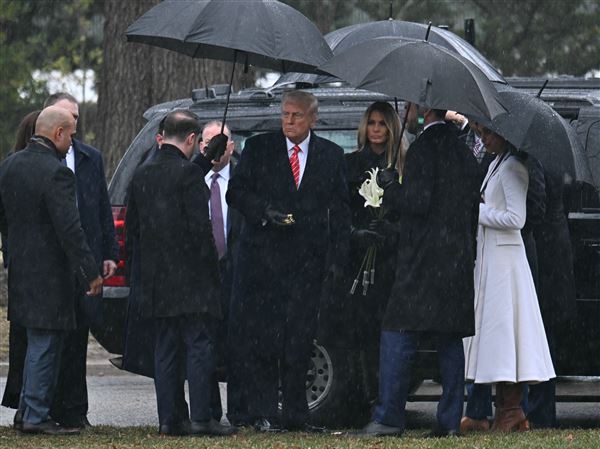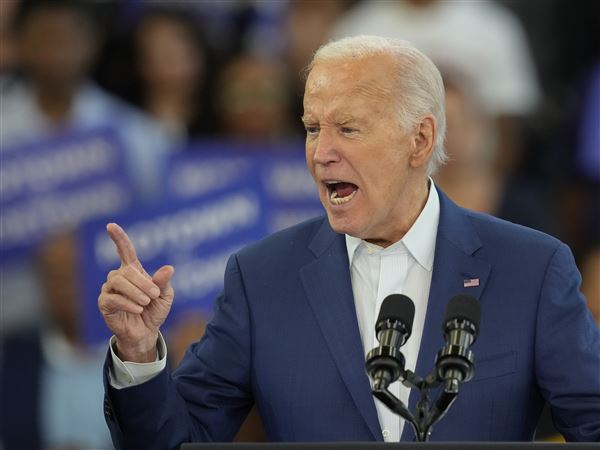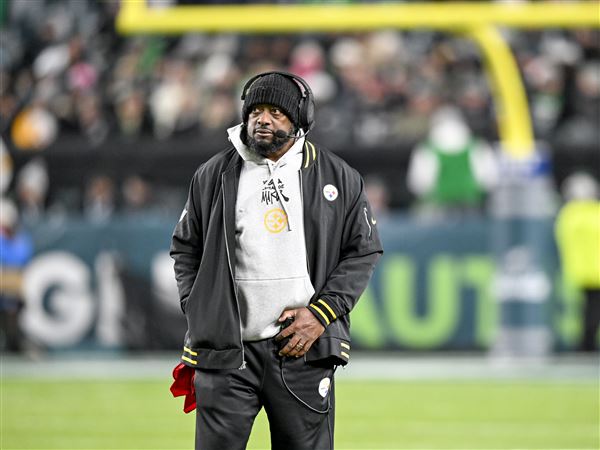Kirk Perry wanted a vehicle that would haul his family and tow a bass boat. He discovered an SUV with all that plus another feature he likes -- a really mean expression.
"I like the wide, snarling look," the 50-year-old small-business owner in Lake Owassa, N.J., says of the Audi Q7, which he plans to buy when it comes out this spring. "It reminds me of the movie 'The Mummy' -- when the monster comes out of the ground and starts swallowing everything."
Car makers have long talked about the "face" of a car -- headlights for eyes, grille for a mouth and the bumper as jaws -- and auto designers say the difference between a hit and a flop may come down to a vehicle's visage. Car makers used to strive for an inviting face, but lately they're pushing an edgier look: Car faces that look meaner, angrier and, at times, even downright evil.
For its new 3-Series sedan, BMW gave the headlights a slanted effect, like downturned eyebrows. Some concept cars are more extreme, with Hyundai's HCD9 Talus featuring a gaping grille and headlights divided by a horizontal, goat's-eye-style slit. The Dodge Charger, which came out last summer, has headlight pods shaped like a tiger's eyes. "The Charger's eyes are definitely its greatest assets. The headlights seem to make eye contact the same way people do on the street," says Dodge and Chrysler designer Ralph Gilles. "A mean face is what we're going for."
Why all the anger? Menacing front ends may appeal to drivers threatened by oversized SUVs and intimidated by the dangers of the highway, some designers say. "I'm not saying we promote rudeness on the road," says Eric Stoddard, senior creative designer for Hyundai. But he adds that a mean-looking car may make drivers feel they can keep others at bay. "It projects a message that a driver may be too shy or afraid to express," he says. "An aggressively styled car says, 'Get out of my way.'"
All of this represents a big mood swing from the designs of recent decades. When Dodge introduced its 1995 Neon compact, its ad campaign featured the car's face -- round headlights like wide, friendly eyes -- and the slogan "Hi." This spring Dodge is releasing the Neon's replacement, the Caliber, which has big, square headlight pods and a grille that resembles a gun-sight's cross hairs. The Caliber's slogan: "It's Anything But Cute."
The strategy seems to be working. Chrysler's 300 sedan, whose face features a gaping grille and headlights that seem to scowl, has outsold the more rounded-looking Ford Five Hundred by 33 percent. (Ford, in fact, says it is redesigning the sedan to give it a more aggressive look.) Cadillac's sales have risen 57 percent since 2002, when it began to introduce a wholesale redesign that features chiseled, angular front ends. Meanwhile, parent company General Motors' Buick and Saturn divisions, which tend toward softer and more rounded front ends, have seen falling or flat sales. Even Volkswagen's iconic Beetle, with its rounded headlight-eyes and a hood that forms a smile, saw sales fall last year to 36,000 units, from 42,000 in 2004.
In general, buyers place great emphasis on the front of a car. About 70 percent of drivers identify and judge vehicles by the headlights and grille, and 88 percent of men and 64 percent of women say they prefer cars with distinctive front ends, up from 73 percent and 42 percent in 1985, says CNW Marketing Research of Bandon, Ore.
There's nothing accidental about seeing faces in car grilles. In fact, carmakers say they're tapping into a hard-wired human trait. Babies can discern the features of a face practically from birth, developmental psychologists say, and recognize faces even in inanimate objects arranged in the pattern of eyes and mouth. In today's hypercompetitive car market, designers are focusing on faces as part of a broader effort to design cars that appeal to buyers -- tapping psychologists, anthropologists and other experts in human behavior, and even monitoring the brain waves of focus-group participants.
One focus-group project, conducted on Cadillac's behalf, put groups of 10 through three-hour clinics that encouraged them to meditate on car design, says Christine Chastain, an anthropologist who worked on the study. After an hour or so of discussion about brands, the researchers played meditative music and asked the participants to recline in their chair. "At that point people start to get surprisingly childlike," says Ms. Chastain. By the third hour researchers began eliciting memories from early childhood, and one participant said the company's luxury cars made him think of resting his head in his mother's lap. Another said a prototype's front end looked "like the bared teeth of an animal."
Further research suggests consumers may like the aggressive designs. General Motors is also experimenting with brain-wave studies, according to Jim Lochrie, director of North American market research for the company. The studies' goal, he says, is to gain clues about the designs that customers don't like initially but that they may become attached to later. He explained one study in which some 40 sensor-wearing participants watched a slide show that mixed notable cars of the past and present with concept cars. Participants indicated to what degree they found each design attractive. But they could also check a box indicating, "I'm not wild about this car now, but it might grow on me." Isolating the brain-wave patterns unique to that reply helps researchers predict which designs that are initially controversial might be hits over the long run.
Not all carmakers are in touch with anger. The Mini Cooper, made by BMW, has doelike headlights and sold 41,000 last year, up 13 percent from the year before. Honda is also sticking mostly with friendly appearances: The company ran a TV ad campaign over the past two years that cut between human faces and Honda front ends to show similarities between them. The spots were based on the concept that cars, like dogs, may resemble their owners and be seen as a friendly companion, says Honda advertising head Tom Peyton. "There are a lot of cars now that look like they are growling at you," he says. "But we like to think Hondas are smiling."
Volvo, too, says it's unlikely to go negative. Peter Horbury, who designed Volvo's S80 sedan, says the Swedish brand appeals to drivers who think the cars will protect them, so he went for styling that evoked strength, including a hood and fenders that suggest broad shoulders. "We didn't want to stick a big growling grille on it," says Mr. Horbury, now the design head for Volvo parent Ford Motor.
The Swedish look struck the right balance for Lev Berkovich. The Los Angeles computer-services project manager says he noticed the "shoulders" of his Volvo XC90 sport-utility vehicle, but mostly he focused on the front end. "Its face is strong but reserved. It reminds me of the actor Charles Bronson -- a tough guy who will protect you," he says. Even Mr. Bronson's mustache is there, in "a combination of black plastic and rubber on the front bumper."
Angry looks may not be here to stay, of course. Auto styling trends are cyclical, and the edgiest designs have a history of retreating. The weapon-like tailfins of the 1950s gave way to milder 1960s styling, while the bulging and ornamented cars of the late 1970s died out as slab-sided Chrysler K-Cars and their look-alike rivals took over in the following decade.
The latest version of Mazda's Miata sports car shows just how much the market has changed. The original, which rolled out in 1989, was a big hit in part because of its friendly looks. The ends of its grille turned upward in an obvious grin, and its pop-up headlights made it look like a winking cartoon character. Though a big seller, the Miata was seen by many buyers as a "chick car," says Ken Seward, Mazda's lead designer. In 1999's version, the smile morphed into more of a smirk. The newest version features headlights with a more extreme slant. "The original Miata had a happy smile," says Mr. Seward. "The new one has more of a sly grin."
Toyota, known for some of the most sedate-looking cars on the market, is also going mean. Toyota has restyled its family-friendly Camry over the past few years to make it more aggressive, and the 2007 model due out later this year has headlights that sweep further back into the fenders, like a leer, and a hood that flows into a hawklike grill.
The maker also reworked the front of its new Rav4 SUV to give it a more pronounced grille and downturned headlights it thought would appeal to male buyers. (Men previously accounted for only 25 percent of Rav4 sales.) "The old Rav was considered cute," says Chris Hostetter, Toyota's vice president for advanced product strategy.
Even one of the car world's aging stars has undergone a face lift. In reconceiving the Ford Mustang, a model that dates to the muscle cars of the 1960s, designer J Mays says he didn't spend much time with focus groups. "I pretty well knew what we were going to do," he says.
Still, he showed photos of his concept car to members of Oklahoma City's Dead Horse Mustang Club. When they told him it "wasn't beefy enough," he widened the front end slightly, then enlarged and squared off the air inlets to affect more of a snarl. The top edges of the round headlights were cut off slightly, for "a sinister eyelid," he says. "Frankly, it looks like it will bite your head off."
Apparently, buyers go for that sort of thing. For 2005, the redesigned Mustang's first full year on the market, sales rose 24 percent to 161,000.
First Published: March 10, 2006, 5:00 a.m.














